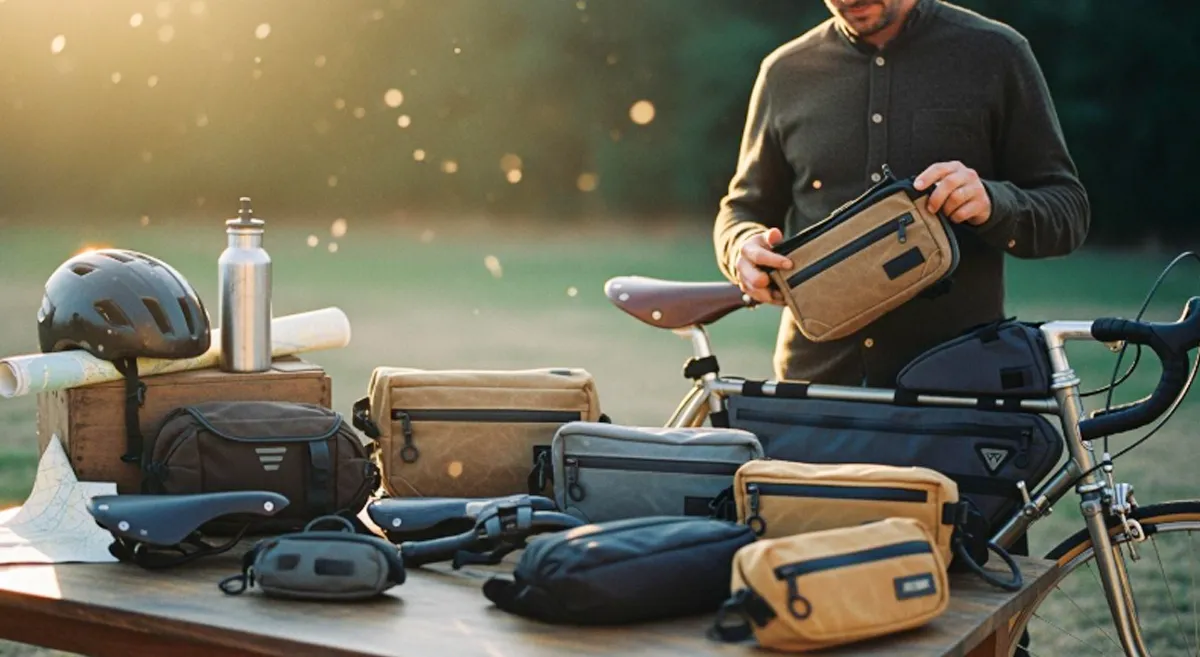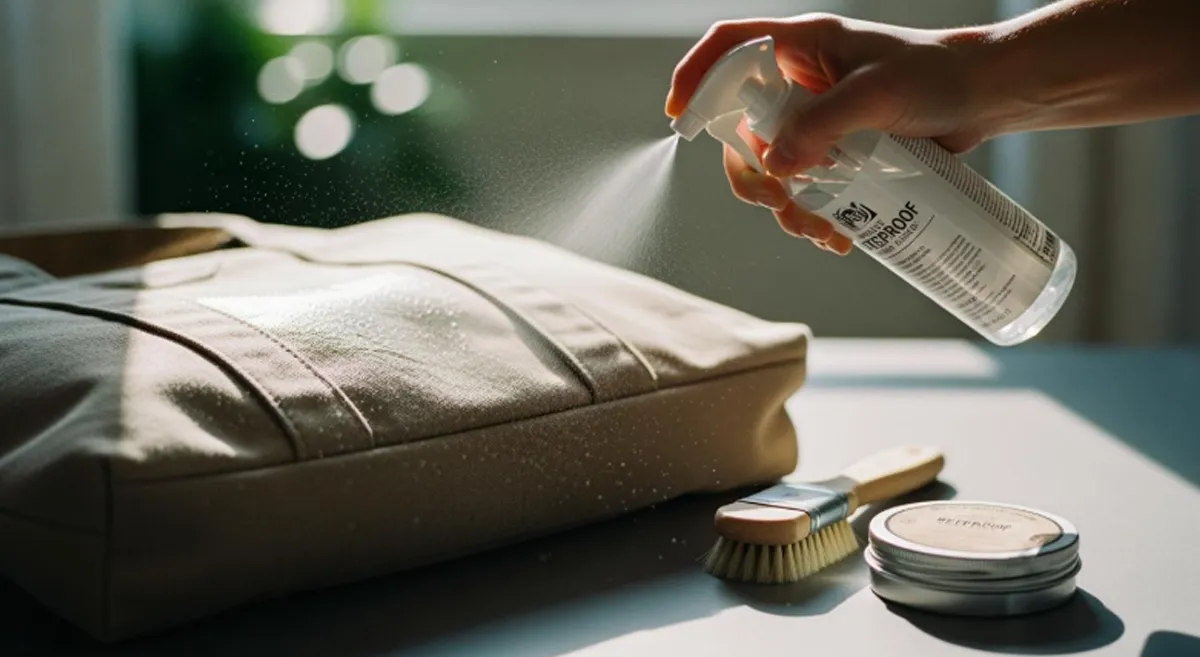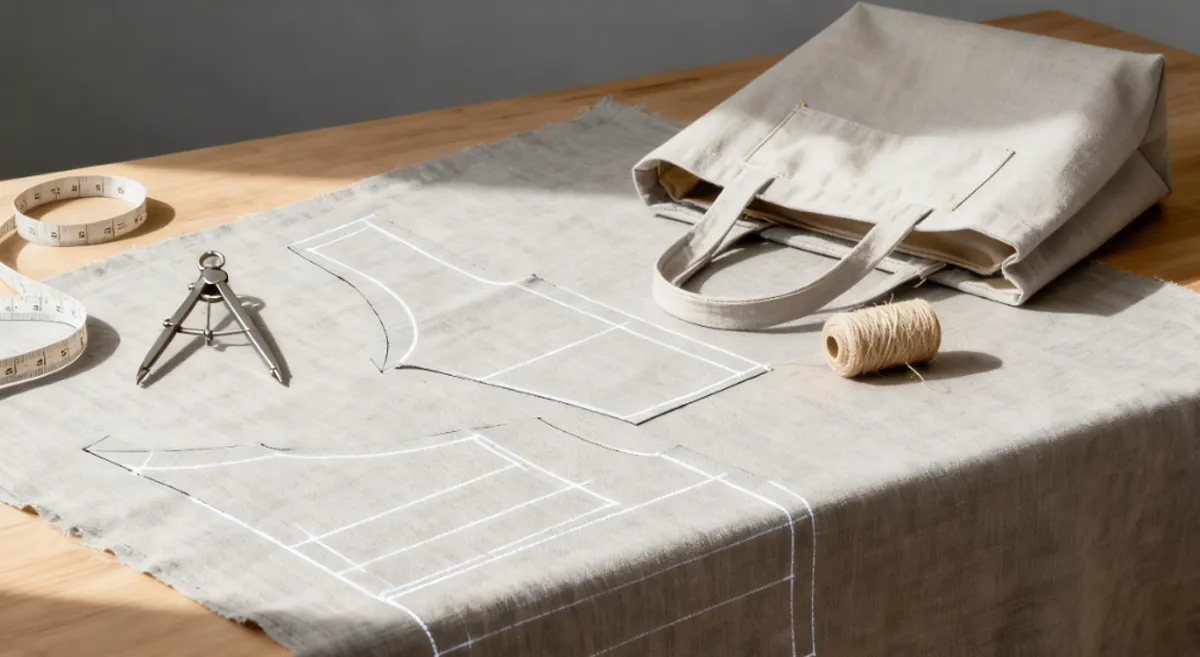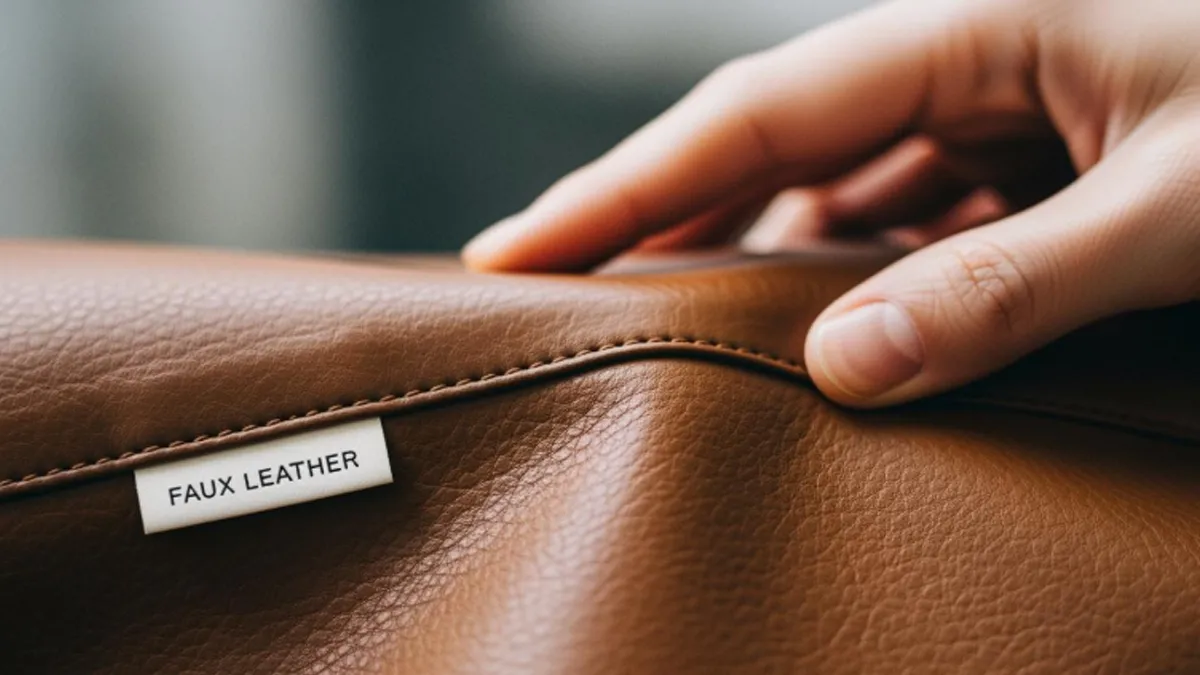
If you have ever wondered what is faux leather fabric, you are not alone. Faux leather is a man-made material designed to look and feel like real leather, but it uses no animal products. Many people love it because it is cruelty-free and easy to maintain. You see faux bags everywhere, from trendy handbags to classic totes. The demand for faux leather keeps rising. In fact, experts say the global synthetic leather market was valued at over $71 billion in 2024 and is growing each year. Understanding faux leather helps you make smart choices when shopping for your next bag.
Key Takeaways
- Faux leather is made by people. It looks like real leather but does not use animal parts. This makes it a kind choice for animals.
- You can clean faux leather easily. Just wipe it with a wet cloth. This keeps it neat and new.
- Faux leather costs less than real leather. You can buy cool bags and things without spending too much money.
- There are two main kinds of faux leather. PU leather feels softer and lets air through. PVC leather is harder and does not let air through as well.
- Faux leather comes in many colors and textures. You have lots of choices to fit your style.
- Good faux leather can last up to 20 years if you take care of it. This makes it strong for daily use.
- When you shop, check for small flaws and rough edges. These can help you find good faux leather items.
- Think about what matters to you when picking faux or real leather. Both types have issues about animals and the planet.
What Is Faux Leather Fabric
Definition
You may wonder, what is faux leather fabric? It is a man-made material that looks like real leather. People also call it vegan leather or artificial leather. If you see a bag or jacket that looks like leather but costs less, it is probably synthetic leather. This material does not use animal products, so it is cruelty-free. Many people choose synthetic leather because it is simple to clean and comes in many colors and styles. The main reason for synthetic leather is to give you the look of real leather without using animals or spending a lot.
Synthetic leather is used in many things. You can find it in bags, shoes, jackets, and car seats. It is popular because it bends easily, costs less, and is easy to care for. When you shop for a new bag, you might notice synthetic leather feels smooth and can look shiny or matte. It is a good choice if you want style and value.
Composition
Let’s see what makes up synthetic leather. The answer to what is faux leather fabric starts with its main parts. Most synthetic leather uses two chemicals: polyurethane (PU) and polyvinyl chloride (PVC). These materials come from petroleum and salt. Factories use them to make a plastic layer that goes on top of a fabric base.
Here is a table to show the main chemical parts:
| Chemical Component | Description |
|---|---|
| Polyurethane (PU) | A flexible polymer used in synthetic leather production. |
| Polyvinyl Chloride (PVC) | A plastic material made from salt and petroleum. |
Factories make PVC by mixing salt and petroleum. They use electrolysis to get chlorine from salt, then mix it with ethylene to make vinyl chloride monomer. For PU, they mix isocyanates and polyols with other things to make it bend easily.
There are two main types of synthetic leather: PU leather and PVC leather. Both start with a fabric base, like cotton or polyester. PU leather has a layer of polyurethane on top, which makes it soft and bendable. PVC leather uses a layer of PVC plastic, which makes it harder and less airy.
Here is a quick comparison:
| Aspect | PU Leather | PVC Leather |
|---|---|---|
| Base | Polyurethane | Polyvinyl chloride (PVC) |
| Fabric backing | Cotton or polyester | Polyester, tightly woven |
| Coating | Polyurethane | PVC plastic + plasticizers |
| Texture | Softer, more flexible | Stiffer, less natural feel |
| Breathability | More breathable | Less breathable, traps heat |
| Closer to leather? | Yes, more leather-like | No, more plastic-like feel |
PU leather feels more like real leather and lets air move through, so it is more comfy. PVC leather is tougher but can feel hot and less like real leather.
Key Features
When you ask what is faux leather fabric, you also want to know what makes it special. Synthetic leather has some main features that make it stand out.
- Smooth look: Synthetic leather has an even surface. You will not see marks or scars like real leather.
- Easy to clean: You can wipe synthetic leather with a damp cloth. It does not need special creams.
- Costs less: Synthetic leather is cheaper than real leather. You can get stylish bags and jackets for less money.
- Many uses: Factories can make synthetic leather in lots of colors, patterns, and textures. You can find it shiny, matte, or with designs.
- Cruelty-free: No animals are hurt to make synthetic leather. This makes it a good choice for people who care about animals.
Let’s compare some features of real leather and synthetic leather:
| Feature | Real Leather | Synthetic Leather |
|---|---|---|
| Look & Feel | Natural texture, unique marks, patina develops | Uniform, lacks natural variations |
| Durability & Longevity | Very durable, lasts decades | Less durable, but high-quality options exist |
| Cost | Expensive | More affordable |
| Sewability | Needs special tools | Easy to sew with standard needles |
| Care & Cleaning | Needs conditioning, careful cleaning | Easy to clean, low-maintenance |
| Applications | High-end items, less for high-traffic areas | Great for outdoor and commercial use |
Tip: If you want a bag that looks nice, is easy to clean, and does not cost much, synthetic leather is a smart choice.
So, what is faux leather fabric? It is a modern material that gives you the look of leather without the cost or animal use. You get style, value, and peace of mind with every synthetic leather bag or accessory.
Characteristics of Faux Leather Fabric
Appearance
Faux leather can look a lot like real leather. Makers work hard to give it a natural look. They use special ways to add folds and a soft shine. Sometimes, they use rubbing alcohol to make it less shiny. This helps it look more like real leather. Faux leather comes in many colors and finishes. You have lots of choices for bags or jackets.
Here’s a quick look at some popular colors in fashion:
| Color Category | Examples |
|---|---|
| Earthy Neutrals | Deep mocha, terracotta, olive green |
| Muted Pastels | Soft blush, powder blue, sage |
| Bold Accent Shades | Electric teal, burnt orange, mustard yellow |
You can pick a classic brown tote or a bright bag. Faux leather makes it easy to match your style.
To make it look real, makers follow these steps:
- They start with a rough base like polyester or cotton.
- Then, they get the plastic base, usually PVC or PU, ready.
- They melt the plastic and put it on the fabric.
- Next, they cut and shape the material.
- Last, they add leather-like designs and textures.
Tip: If you want a bag that stands out, faux leather gives you more color and finish choices than real leather.
Texture
When you touch faux leather, it feels smooth or a bit plastic-like. Real leather can feel soft or rough, but faux leather is more even. Some types are stiff, and others bend easily. Makers often add texture to copy real leather’s feel. They may use a wax-based conditioner to make it softer.
Here’s what you might notice when you compare both:
- Faux leather feels very smooth, sometimes slippery.
- Real leather can be soft or rough, depending on the type.
- Faux leather stretches more than real leather.
- Real leather is usually softer, but faux leather can feel stiff at first.
If you want a soft and bendy bag, pick high-quality faux leather. Some types feel almost as nice as real leather.
Durability
You might wonder how long faux leather lasts. It depends on the quality and how you care for it. Faux leather is good at handling daily use. Some high-quality faux leather bags can last up to 20 years if you take care of them.
Here’s a table to help you compare the durability:
| Material | Durability | Abrasion Resistance | Lifespan |
|---|---|---|---|
| Faux Leather | Generally less durable | Good, varies by quality | Up to 20 years with proper care |
| Real Leather | Highly durable | Excellent | Long-lasting, develops patina |
Faux leather does not get a patina like real leather. But it resists scratches and stains better. If you want a bag that looks new for a long time, faux leather is a good choice. Remember, how long it lasts depends on the quality and how you use it. For everyday bags, faux leather gives you style and strength.
Note: Always check the quality before you buy. High-quality faux leather will last longer and look better over time.
Water Resistance
You might wonder if faux leather can handle water. Good news—it does a great job! Faux leather has a plastic coating, so water usually sits on the surface instead of soaking in. If you spill something on your faux leather bag, you can wipe it off quickly. This makes faux leather a smart choice for rainy days or busy commutes.
Manufacturers test faux leather in labs to make sure it stands up to water and daily use. Here’s a look at some common tests and what they mean for you:
| Test Name | Description | Duration/Criteria |
|---|---|---|
| ISO 1419 Method C | Checks for signs of failure in polyurethane material compared to a control sample. | Must last at least 5 weeks in the test chamber. |
| ASTM D 3690 | Measures adhesion, abrasion, and flex resistance after 15 days in a chamber. | Adhesion must keep at least 75% of original strength; no cracks after 25,000 Wyzenbeek cycles. |
| ASTM D 2097 Newark Flex Test | Looks for breaks in the PU coating after repeated bending. | No breaks allowed after 15,000 cycles. |
These tests show that high-quality faux leather can resist water and flexing for a long time. You get a bag that stays strong and looks good, even with daily use.
Tip: If you want your faux leather bag to last, wipe off spills right away. Don’t let water sit on the surface for too long.
Maintenance
Taking care of faux leather is easy. You don’t need fancy products or special tools. Just follow a few simple steps to keep your bag or jacket looking fresh:
- Wipe the surface with a damp microfiber cloth to remove dust and stains.
- Use mild soap if you need extra cleaning power, but skip harsh chemicals.
- Always check the care label for cleaning instructions.
- Wash garments inside out to clean the dirtiest spots.
- For tough stains, consider professional dry cleaning to protect the style.
- Avoid oil-based conditioners, which can damage the surface.
- Keep your faux leather away from direct heat or strong sunlight for long periods.
Note: Regular cleaning and smart storage help your faux leather items last longer and look their best.
With these easy steps, you can enjoy your faux leather bag or accessory for years. You get style, value, and peace of mind—all with simple care.
How Faux Leather Fabric Is Made
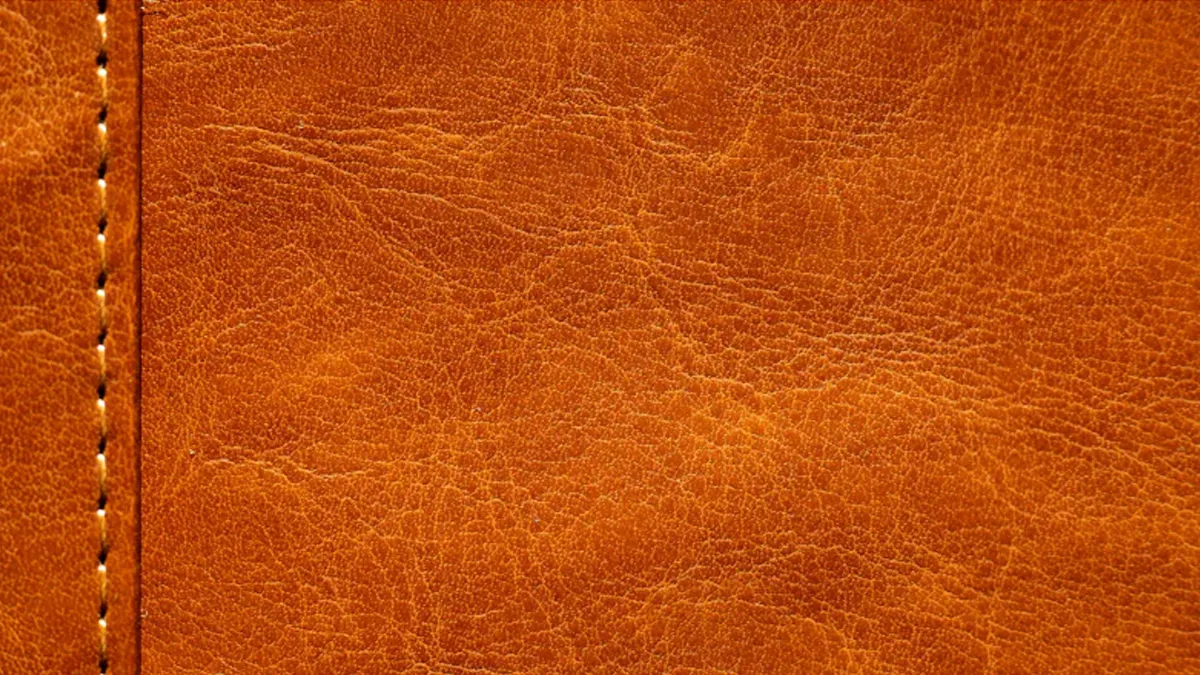
You may ask, how do people make faux leather? The answer depends on the type you pick. Most bags use either pu faux leather fabric or pvc faux leather fabric. Each kind has its own way of being made and special features. Let’s look at how these materials are created.
PU Faux Leather Fabric
If you choose pu faux leather fabric, you get a soft and bendy material. The process starts with a fabric base, like cotton or polyester. Makers use pu, which is a kind of plastic, to make the top layer look like leather. Here’s how they make it:
- Coating: Workers put layers of pu on the fabric.
- Drying: The fabric goes into a room to dry out.
- Curing: Heat makes the pu layer strong and smooth.
- Embossing: Hot rollers press patterns for texture.
- Coloring: Makers add dyes and pigments for color.
- Protective Layers: Extra coats help stop damage.
- Texture: The last step gives it a real leather look.
You get a bag that looks and feels like leather but is easier to clean. PU faux leather fabric uses less energy than real leather because it does not need animal farming. The process still uses a lot of energy, but it does not cause the same pollution as raising animals.
Tip: If you want a soft and airy bag, pu faux leather fabric is a good choice.
PVC Faux Leather Fabric
PVC faux leather fabric is made in a different way. The base is usually polyester. Makers cover it with pvc, which is another kind of plastic. This material feels harder and less like real leather. The steps are:
- Covering the fabric with pvc and plasticizers.
- Heating the material to set the top layer.
- Pressing patterns for texture.
- Adding color and extra protective coats.
PVC faux leather fabric is strong and lasts a long time, but it can hurt the environment. Making pvc lets out dioxins and harmful gases called VOCs. These chemicals can pollute the air and water. Dioxins stay in nature and can build up in animals and people. Burning pvc also sends bad chemicals into the air.
Here’s a quick look at the environmental effects:
| Environmental Impact | Description |
|---|---|
| VOCs Release | Making it gives off harmful gases. |
| Toxic Additives | Makers use risky chemicals like phthalates. |
| Non-biodegradable Waste | Waste adds to plastic trash. |
Note: PVC faux leather fabric is tough, but it is not as good for the planet as pu faux leather fabric.
Process Overview
Both pu and pvc faux leather start with a fabric base. Makers cover the base with plastic, then add color and texture. PU uses polyurethane, which feels softer and lets air pass through. PVC uses polyvinyl chloride, which feels harder and keeps in heat.
You might see that pu faux leather fabric has a smaller carbon footprint than real leather. It does not need animal farming, which uses lots of resources. But making pvc causes more pollution and toxic waste. Both types do not break down, so they stay in landfills for a long time.
If you care about nature, pu faux leather fabric is usually the better pick. You get style, comfort, and help protect the earth.
Faux Leather vs. Real Leather
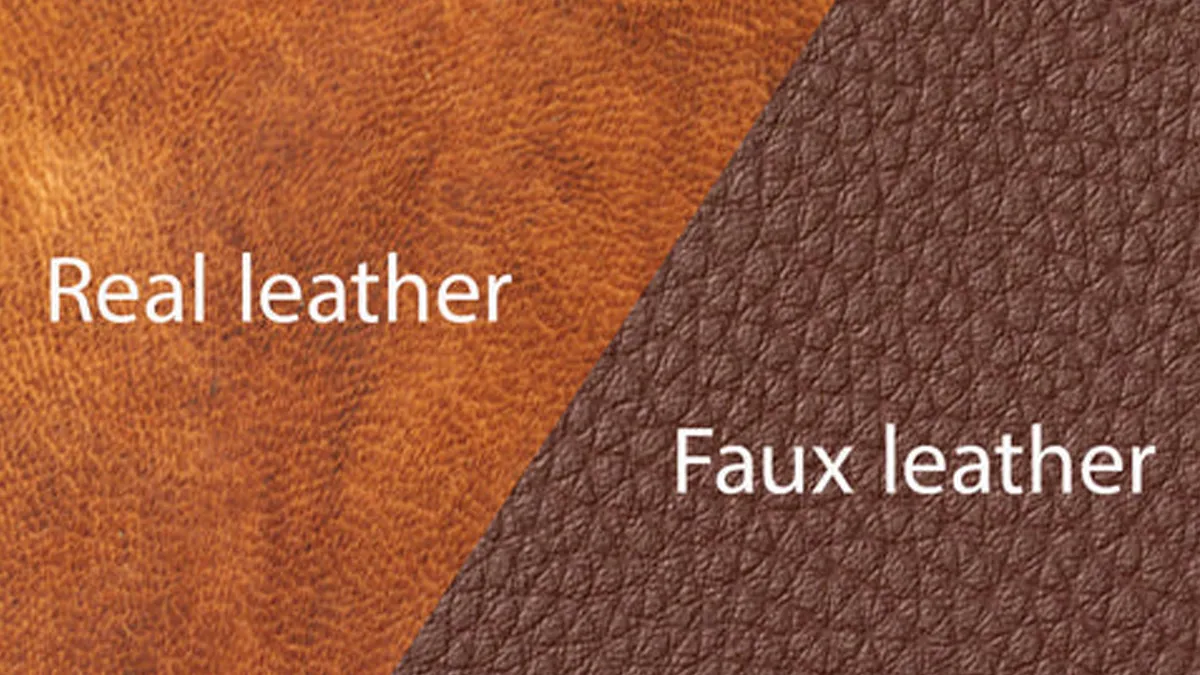
Look and Feel
When you pick up a faux leather bag, you might notice how smooth and even it looks. Makers design faux to copy the look of real leather, but it often has a more uniform surface. Real leather shows natural marks and changes over time. You might see small scars or lines on real leather, which give each piece a unique look.
Faux leather comes in many colors and finishes. You can find shiny, matte, or textured styles. Real leather usually sticks to classic shades like brown, black, or tan. If you want a bold color or a special pattern, faux gives you more choices.
When you touch faux, it feels soft or sometimes a bit plastic-like. Real leather feels warmer and softer, and it gets even better as you use it. Over time, real leather develops a patina, which means it changes color and gets a rich, lived-in look. Faux leather stays the same from day one.
If you want a bag that always looks new and comes in many colors, faux leather is a great pick. If you love a natural, changing look, real leather might be for you.
Performance
You might wonder how faux leather holds up in daily life. Let’s break it down:
- Faux leather is more flexible than real leather. You can bend and twist it without much worry.
- Faux stands up well to rain and spills. It does not soak up water, so you can wipe it clean.
- Real leather is naturally breathable. Air moves through it, which keeps you comfortable.
- Faux leather does not breathe well. If you carry a faux bag on a hot day, you might notice your skin gets sweaty.
- Real leather can handle heavy use and lasts for years if you care for it.
Here’s a quick table to help you compare:
| Feature | Faux Leather | Real Leather |
|---|---|---|
| Flexibility | Very flexible | Less flexible |
| Breathability | Poor, can trap sweat | Good, stays cool |
| Water Resistance | High, easy to clean | Needs care, can stain |
Tip: If you want a bag for rainy days or busy commutes, faux leather works well. For comfort and long life, real leather is hard to beat.
Cost
You probably notice a big price difference when you shop for bags. Faux leather costs much less than real leather. The reason is simple. Making real leather takes more time and skill. Factories must treat animal hides, which is a long process. Faux leather uses a faster, easier method with plastic and fabric.
When you buy a faux bag, you get style without spending a lot. Real leather bags cost more because they last longer and have a special feel. If you want a trendy bag for less money, faux leather is the way to go. If you want an investment piece, real leather might be worth the higher price.
You can build your bag collection with faux leather and try new styles without breaking the bank.
Ethics
When you buy a new bag, you might think about ethics. Both real leather and faux leather have their own issues. Let’s look at them so you can choose what fits your values.
Real leather comes from animals. Companies raise cows or other animals for leather. They must kill these animals to make leather. This brings up questions about animal welfare. Some people feel bad knowing animals die for fashion. If you care about animal rights, you may not want real leather.
Faux leather does not use animal products. You might think it is the best ethical choice. But there are other things to think about. Faux leather is made from plastics like polyurethane (PU) or polyvinyl chloride (PVC). These plastics come from oil and other resources that cannot be replaced. Factories use chemicals to make these plastics into fabric. This can cause pollution and release bad gases into the air. Over time, these chemicals can hurt nature and add to climate change.
Here are some main ethical concerns:
- Real leather means raising and killing animals, which is a worry for animal welfare.
- Faux leather does not use animals but uses synthetic materials that can harm nature.
- Making faux leather uses resources that cannot be replaced and chemicals that can pollute air and water.
- Real leather lasts longer, so you may throw away fewer bags. Faux leather bags might wear out faster, causing more trash.
Tip: If you want to make an ethical choice, think about what matters most to you. Do you care more about animal welfare or the environment? There is no perfect answer, but knowing the facts helps you decide.
You can also look for brands that use recycled materials or eco-friendly ways. Some companies now make faux leather from plants or recycled plastics. These choices can help lower harm to animals and the planet.
In the end, your choice depends on your values. If you want to avoid animal products, pick faux leather. If you want something that lasts longer and makes less trash, pick real leather. No matter what you choose, learning the facts helps you shop with confidence.
Pros and Cons
When you shop for a new bag or accessory, you want to know what you’re really getting. Let’s break down the advantages and disadvantages of faux leather so you can decide if it’s the right fit for your style and needs.
Advantages
You’ll find many reasons why people love faux leather. Here are some of the top advantages:
- You get a cruelty-free option. Faux leather addresses ethical concerns about animal welfare, so you can feel good about your choice.
- It appeals to vegans and people who care about the environment.
- The texture is always uniform. This makes it great for brands that want every bag to look the same.
- Faux leather is low-maintenance. You can clean it easily and restore its look with little effort.
- It’s flexible in design. You’ll see it in many colors, patterns, and finishes.
- High-quality faux can resist wear and tear, so your bag stays looking sharp.
Here’s a quick table to show you more about the advantages of faux leather:
| Advantage | Description |
|---|---|
| Cost-effectiveness | Faux leather is more affordable than real leather, so you get more value for your money. |
| Versatility | It comes in many colors and textures, giving you lots of creative choices. |
| Ethical considerations | You support animal welfare and help reduce the impact on the environment. |
If you want a stylish bag that’s easy to care for and offers great value, faux leather is a smart pick.
Disadvantages
Of course, there are some disadvantages of faux leather that you should know before you buy. Here’s what many people notice:
- Faux leather usually has a shorter lifespan than real leather. It may not last as many years.
- The material is less durable. It can crack, tear, or lose its shine over time.
- The production process can harm the environment. Factories use petroleum and heavy metals, which create pollution and waste.
- Faux, especially PVC types, does not breathe well. Your bag might feel hot or sticky in warm weather.
- The material is not hypo-allergenic. Some people may react to the chemicals used.
- It’s easier to puncture or tear faux leather than real leather.
You might also hear that the disadvantages of faux leather include its impact on the planet. When you throw away old faux bags, they can release microplastics and chemicals into the environment. This can hurt wildlife and even affect your health.
Remember, while faux leather gives you value and style, it’s important to weigh these disadvantages before making your choice.
Uses of Faux Leather Fabric
Bags and Handbags
You see faux leather fabric everywhere in the world of bags and handbags. Many brands use it to create stylish totes, backpacks, and crossbody bags. You get a wide range of colors and textures, so you can always find something that matches your style. Faux leather fabric is lightweight, which makes your bag easy to carry all day. It also resists stains and water, so you do not have to worry about spills or rain.
If you want a cruelty-free option, faux leather is a smart choice. You can enjoy the look of real leather without using animal products. Many people love how easy it is to clean. Just wipe your bag with a damp cloth, and it looks fresh again. These applications make faux leather fabric a top pick for anyone who wants a trendy and practical bag.
Fashion
Faux leather fabric has become a favorite in the fashion world. Designers use it for jackets, skirts, pants, and even shoes. You get the same bold look as real leather, but at a lower price. Faux leather fabric lets you try new trends without spending a lot. You can find it in classic black, bright colors, or even fun patterns.
Here are some popular applications of faux leather in fashion:
- Jackets and coats for a cool, edgy style
- Skirts and pants that look sleek and modern
- Shoes and boots that are easy to clean
- Belts, hats, and gloves for stylish accessories
Faux leather fabric also shows up in other creative applications. You might see it in tech cases, like phone or tablet covers, because it looks premium and protects your devices. Some artists use it in sculptures or wall art because it bends and shapes easily. You can even spot it in home décor, like decorative pillows or wall panels, adding a modern touch to any room.
Tip: If you want to try a new trend or add a bold piece to your closet, faux leather fabric gives you lots of options.
Furniture
You will notice faux leather fabric in many homes, offices, and hotels. It is a top choice for sofas, chairs, and benches. Manufacturers love it because it costs less than real leather and comes in many colors and styles. You can pick a classic black sofa or a bright red chair to match your space.
Here are some ways faux leather fabric is used in furniture applications:
- Sofas and sectionals for living rooms
- Office chairs and conference seating
- Restaurant booths and hotel lobbies
Faux leather fabric is easy to clean, which is great if you have kids or pets. Just wipe away spills or crumbs. Many hotels and restaurants choose it because it resists stains and keeps looking new. In fact, more than 60% of office seating now uses synthetic leather, and sales of synthetic leather sofas have gone up by 15-20%. This shows how popular and trusted it is for furniture applications.
You also help the planet when you pick faux leather fabric. It does not use animal farming or harsh chemicals, so it is a more sustainable choice. Manufacturers save money and get more design flexibility, which means you get stylish and affordable furniture.
Note: If you want furniture that looks good, lasts long, and is easy to care for, faux leather fabric is a great option.
Automotive
You might not realize it, but faux leather plays a big role in the cars you see every day. Car makers use it for many parts inside your vehicle. You get a stylish look and a comfortable feel without the high price of real leather. Faux leather has become a favorite in the automotive world because it offers both style and practicality.
When you sit in a car with faux leather seats, you notice how smooth and soft they feel. These seats look just as good as real leather, but they cost less. You also get more choices in color and texture. Car makers can match the seats to the rest of the interior, giving you a custom look. Faux leather does not crack or fade as quickly as some other materials. It stands up to sunlight, spills, and daily wear.
Let’s look at where you find faux leather in cars:
| Application | Benefits |
|---|---|
| Automotive seats | Durable, cost-effective, customizable in thickness, patterns, and colors |
| Door panel coverings | Excellent wear resistance, easy maintenance, visually appealing |
| Steering wheel wraps | Highly functional, caters to diverse consumer preferences and market trends |
You see faux leather on seats, door panels, and even steering wheels. Each spot needs a material that can handle lots of use. Faux leather does the job well. It resists stains and is easy to clean. If you spill a drink or drop food, you can wipe it away with a cloth. This makes it perfect for families or anyone who spends a lot of time in their car.
Here are some reasons why car makers choose faux leather:
- Faux leather costs less than real leather, so you save money.
- It lasts a long time and does not fade or crack easily.
- Cleaning is simple, which helps your car look new for years.
- You get more options for colors and patterns.
Real leather feels great and gets better with age, but it needs more care. Faux leather gives you a modern look with less work. You do not have to worry about special cleaners or conditioners. Just wipe and go.
If you want a car interior that looks sharp and stays clean, faux leather is a smart choice. You get comfort, style, and value all in one package.
Faux leather keeps getting better as technology improves. Car makers now offer seats and panels that look almost exactly like real leather. You can enjoy a luxury feel without the luxury price tag. Next time you get into a car, take a look around. You might be surprised at how much faux leather you see!
Care for Faux Leather
Taking care of faux leather is simple and helps your bags and accessories last longer. You do not need fancy products or a lot of time. With the right steps, you keep your items looking fresh and stylish.
Cleaning
Faux leather is easy to clean, which makes it a favorite for busy people. You can keep your bags and accessories looking new with just a few steps. Here’s a simple routine you can follow:
- Vacuum your faux leather bag with a soft brush attachment. This removes dust and crumbs from seams and corners.
- Wipe down the surface with a damp cloth. Focus on spots where oil or dirt builds up, like handles or straps.
- Mix a small amount of dish soap with water. Use a microfiber cloth to gently clean the surface.
- For stains, start with your regular cleaner. If the stain stays, try a cleaner made for faux leather.
- Make a gentle solution with one part vinegar, one part soap, and eight parts water. Use this mix for a deeper clean.
Tip: Always test any cleaner on a small hidden spot first. This helps you avoid damage or color changes.
Storage
How you store faux leather matters. Good storage keeps your bags from fading, cracking, or losing shape. Try these tips to protect your items:
- Keep bags away from direct sunlight. Sunlight can make faux leather fade and become brittle.
- Store your items in a cool, dry place. Heat and moisture can cause warping or cracks.
- Place bags on soft surfaces or inside dust bags to prevent scratches.
- Stuff bags with acid-free paper. This helps them keep their shape.
- Do not hang bags by their straps for a long time. Hanging can stretch or deform the straps.
- Clean your faux leather before putting it away. Dirt can cause damage over time.
- Use cotton or other breathable storage bags. This stops moisture from building up and lowers the risk of mold.
- Check stored items now and then. Early signs of damage or moisture are easier to fix.
Note: A little care goes a long way. Good storage means less work later.
Damage Prevention
Faux leather can peel, crack, or wear out if you do not care for it. You can avoid most problems with minimal maintenance. Here are some things to watch out for:
- Faux leather does not heal like real leather. Once it cracks or peels, you cannot fix it.
- Regular cleaning and gentle use help prevent damage.
- Keep your bags away from sharp objects that can scratch or puncture the surface.
- Avoid placing heavy items inside, which can stretch or stress the material.
- Do not use harsh chemicals or rough brushes. These can break down the surface.
Remember: Treat your faux leather with care, and it will stay beautiful for years.
Quality Identification
You want your faux leather bag to look great and last a long time. How can you tell if the material is high quality? Let’s break it down so you can shop with confidence.
Visual Check
Start with your eyes. Good faux leather stands out right away. You might notice small blemishes or tiny variations on the surface. These natural imperfections show that the material is trying to mimic real leather. If the surface looks too smooth or flawless, it may be lower quality.
Check the edges of the bag or accessory. High-quality faux leather often has raw or unfinished edges. If you see perfectly smooth or sealed edges, the material might be more synthetic and less durable.
Look at the grain pattern. Unique and irregular grain patterns are a sign of quality. Uniform or repeated patterns can mean the material is mass-produced and not as strong.
Here’s a quick list to help you spot quality:
- Small blemishes or tiny marks
- Raw or unfinished edges
- Irregular grain patterns
- Subtle color variations
Tip: Bags with a little character often use better faux leather. Don’t be afraid of a few imperfections!
Touch
Now, use your hands. Quality faux leather feels different from cheaper options. When you touch the surface, it should feel soft and flexible, not stiff or plasticky. Real leather has a warm, unique texture. High-quality faux leather tries to copy this feeling.
Press your finger into the material. Does it bounce back? Good faux leather has a little give. If it feels cool, slippery, or doesn’t move at all, the quality may be lower.
Check the seams and edges with your fingers. Rough or raw edges often mean better quality. Perfectly finished seams can signal a cheaper product.
Here’s a table to compare:
| Feature | High-Quality Faux Leather | Low-Quality Faux Leather |
|---|---|---|
| Texture | Soft, flexible | Stiff, plasticky |
| Edge feel | Raw, rough | Smooth, sealed |
| Surface temperature | Warm, natural | Cool, artificial |
Note: Trust your senses. If it feels good in your hand, it’s probably made with care.
Labels
Don’t forget to check the labels. Brands that care about quality usually share details about the material. Look for words like “PU leather” or “vegan leather.” These labels often mean the product uses better materials.
Some bags have tags that mention durability tests or eco-friendly production. If you see information about how the faux leather was made, that’s a good sign. Labels can also show if the product meets safety standards or uses recycled content.
When you shop, compare labels from different brands. Products with clear, honest labels often have higher quality.
Tip: Labels tell a story. If a brand is proud of its faux leather, they’ll let you know.
With these simple checks, you can spot quality faux leather every time. Use your eyes, hands, and a little label reading to make smart choices for your next bag.
Conclusion
You now know what makes faux leather fabric a smart choice. It looks stylish, feels soft, and works well for bags, clothes, and more. You get easy care and a cruelty-free option. Want a bag that stands out? Try faux leather next time! We have years of experience making custom bags. Need something special? Contact us for OEM or ODM bag solutions. Let’s create your perfect bag together!
FAQ
What is the best way to clean faux leather bags?
You can wipe your faux leather bag with a damp cloth. For tough spots, use a little mild soap and water. Avoid harsh cleaners. Dry the bag with a soft towel. This keeps your bag looking fresh and new.
Can faux leather crack or peel over time?
Yes, faux leather can crack or peel if you do not care for it. Keep your bag away from direct sunlight and heat. Clean it gently. Store it in a cool, dry place. Good care helps your bag last longer.
Is faux leather waterproof?
Faux leather resists water well. Spills usually sit on the surface, so you can wipe them away. It is not fully waterproof, though. Try not to soak your bag or leave it in heavy rain for a long time.
Does faux leather smell like real leather?
Faux leather does not have the same smell as real leather. It may have a light plastic scent when new. This smell fades after a few days. If you want that classic leather scent, real leather is the only option.
How can I tell if a bag is made from faux leather?
Check the label first. You can also look at the texture and edges. Faux leather feels smooth and even. Real leather has natural marks and a unique grain. If you see “PU” or “PVC” on the tag, it is faux leather.
Is faux leather safe for people with allergies?
Most people can use faux leather safely. It does not have animal proteins that cause allergies. Some people may react to chemicals in low-quality faux leather. If you have sensitive skin, choose high-quality, certified faux leather products.
Can I repair damaged faux leather?
You cannot fully fix cracks or peeling on faux leather. Small scratches may fade with gentle cleaning. For bigger damage, you might use a patch or cover it with a sticker. If the damage is bad, you may need a new bag.


